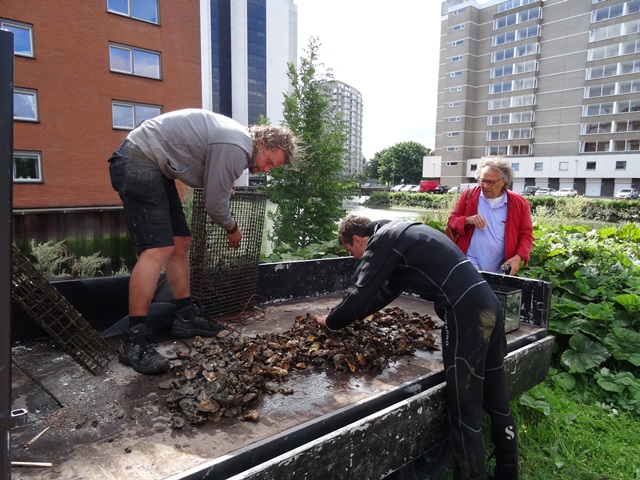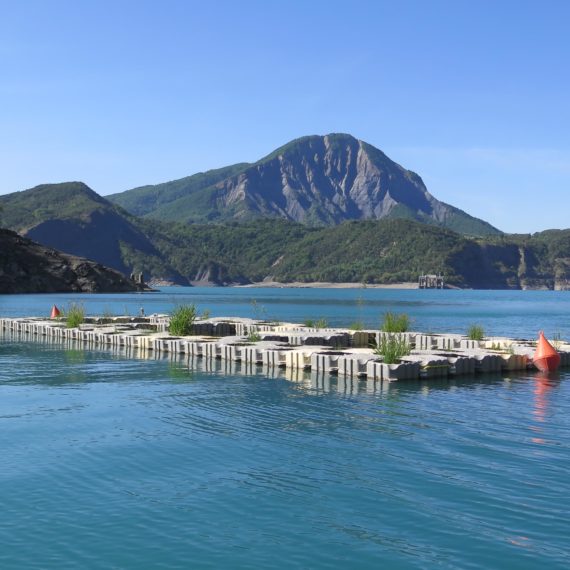Floating garden in Rotterdam
Hollande © RD

Hollande © RD

Hollande © RD

Hollande © RD

Hollande © MB

Hollande © RD

Hollande © RD

Hollande © MB

Context
The city of Rotterdam is committing to improving its water quality by 2021, also the city is critically lacking green spaces. In this context, the company Urban Green has proposed the original idea of reinvesting the disused city canals by installing floating vegetated structures, which would be an asset for life both above and below water. A first prototype was installed in Buizengat Canal in 2015, consisting of 8 tanks filled with soil and planted with terrestrial vegetation, surrounded by grids where semi-aquatic vegetation develops and grow roots in the water, thus providing habitat for aquatic fauna. The whole structure is organized around an empty central space that Ecocean has equipped with 4 Biohut in 2016.
Interests & objectives
The central zone of the garden is particularly adapted to the development of young fish as it is protected from currents and presents an open-air surface. But the walls from the tanks forming this protective enclosure are fully smooth and therefore offers little opportunities of food or shelter. Equipping this area with Biohut enables to valorize this interesting zone, while providing a great added-value to the whole garden by diversifying the available spawning and nursery habitats: on the one hand the soft substrate provided by the roots on the outer border of the garden, on the other hand the hard substrate provided by the Biohut grids and shells on the inner border.
Monitoring
A first monitoring was implemented by Bureau Waardenburg in 2016. The results validated the nursery function of the garden as a particularly strong concentration of juveniles has been observed in the surrounding area. A total of 22 species were recorded. Moreover, the installation of the garden has led to a significant reduction in the catch rate of the main local invasive species (from 78% in 2015 to 30% in 2016) confirming that habitat complexification is an effective tool against the proliferation of invasive species. As for the spawning function, only perch eggs were observed so far. A second monitoring was carried out by Ecocean in July 2017 and aimed at studying the specific impact of the Biohut. It appears that the central zone equipped with Biohut concentrated the highest density of juvenile fish (mainly perch and roach at this point of the year). A monitoring of the fixed fauna and flora from one Biohut revealed the presence of two species of crabs as well as 5 juvenile eels, while the high density of macroinvertebrates present in the shell suggests that the Biohut represents a very good source of food for juvenile fish.
Project outcomes(phase 1):
On the long term, several hundred meters of additional floating gardens should be installed by 2021 at the latest. As the interest of the Biohut has been wildly recognized among project partners, it is likely that these future structures will also be equipped, ensuring a broad deployment of the Biohut technology in the city of Rotterdam.




